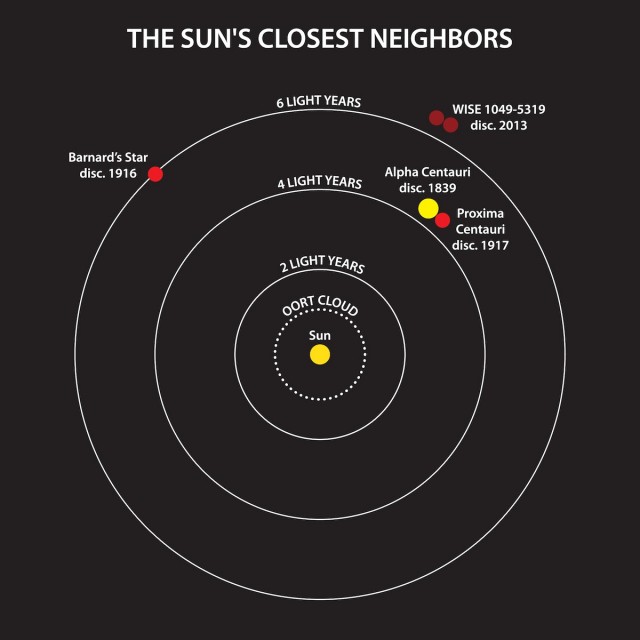Meet the Sun’s new neighbors
Ars Technica » Scientific Method 2013-03-11
Today, an astronomer announced that by scanning archival images dating back to 1978, he has located a binary star system only 6.5 light years from Earth. This is close enough that it qualifies as the third-closest star system to our Solar System. The system is composed of two brown dwarfs orbiting each other with a period of about 25 years.
The stars were first noted in the WISE survey, which cataloged objects in the infrared. Because the mission lasted longer than planned, it was able to complete two scans of the sky. Astronomer Kevin Luhman spotted the system, which is going by the name of WISE J104915.57-531906, because it moved significantly between the two scans. Going back to earlier surveys, he was able to spot the same object moving across the sky for decades. (His home institution, Penn State, is hosting a nice animated GIF of its progress.)
Since these observations were obtained at different locations (some of them in orbit), it was possible to calculate a distance to the object using a method called parallax. This produced a result of 6.5 light years with an error of less than half a light year, which places it just beyond Barnard's Star, the second closest star to Earth after the members of the Centauri system. Luhman also turned a telescope toward the new object to get its spectroscopy. This revealed that the item wasn't a single object, but two—based on the low apparent temperature, they appear to both be brown dwarfs and too cool to ignite hydrogen fusion.
Read 2 remaining paragraphs | Comments
